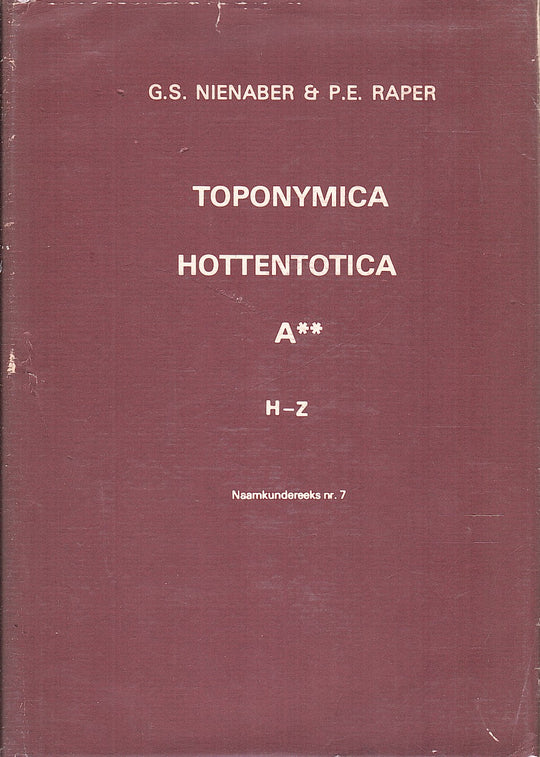eng
The farm no v.w.q. 1-5, District Prieska, spelled at Topo Cadastral Series 1966 Skin 3022 Britstown as 'Tcuepe', lying on the western bank of the Ingovernment. On the eastern shore, d.w.s. right opposite 'tcuep, lies adjacent the farm 'coy' is of what was earlier Slypsteen No. 1909- 108-6802, also at 3023 aa. The word 'stone', in Dutch also for our stone, is in Nama ǀ UI-B, in Old Cape with K- front , with the 't- for the sucking consonant, here the dental ǀ, and with the c- for k, the old skeleton in front, then the exact corresponding of Nama ǀ (?) Ui-b = stone, rock, mountain. The farm names' tcuip and coyer refers to a mountain, head, or in particular to a stone, rock, 'stone', and if to a 'stone', then possibly to a mountain (the -b, also -p locates a mountain and ve Reavity) where the stones were also for the purposes of sharpening. In no case is this cockpit and 'tcuep like the Afrikaans word 'cockpit', as locally suggested.
afr
Die plaas nr V.W.Q. 1-5, distrik Prieska, gespel op Topo-kadastrale reeks 1966 vel 3022 Britstown as ''Tcuip', le aan die westelike oewer van die Ongers- rivier. Aan die oostelike oewer, d.w.s. reg oorkant ’Tcuip, le aangrensend die plaas 'Kuip' Ho.Q. 5-10 (nou in die distrik Britstown, met die Ongersrivier hier die grens tussen Britstown en Prieska). Dit maak dit redelik seker dat ’Tcuip en Kuip twee spellinge is van wat vroeër een plaas was. Die ’T- is sonder twyfel die suigkonsonant wat in Kuip weggelaat is, en verteenwoordig die vroeëre uitspraak. ’Tcuip en Kuip beteken dieselfde, synde dieselfde woord. ’Tcuip grens aan sy suidwestelike sy aan die plaas Slypsteen nr 1909- 108-6802, ook op 3023 AA. Die woord 'steen', in Nederlands ook vir ons klip, is in Nama ǀui-b, in Ou-Kaaps met k- vooraan (ǀ)kuip. Die ’Tcuip, met die ’T- vir die suigkonsonant, hier die dentale ǀ, en met die c- vir k-, die ou velaar vooraan, is dan die presiese ooreenstemmende van Nama ǀ(?)ui-b = klip, rots, berg. Die plaasname ’Tcuip en Kuip verwys dus na ’n berg, kop, of in die besonder na 'n klip, rots, 'steen', en indien na 'n 'steen', dan moontlik na ’n berg (die -b, ook -p lokativeer ’n berg en verhewenheid) waar die klippe ook vir doeleindes van slyp dienstig was. In geen geval is hierdie Kuip en ’Tcuip soos die Afrikaanse woord 'kuip' nie, soos plaaslik voorgestel is.




